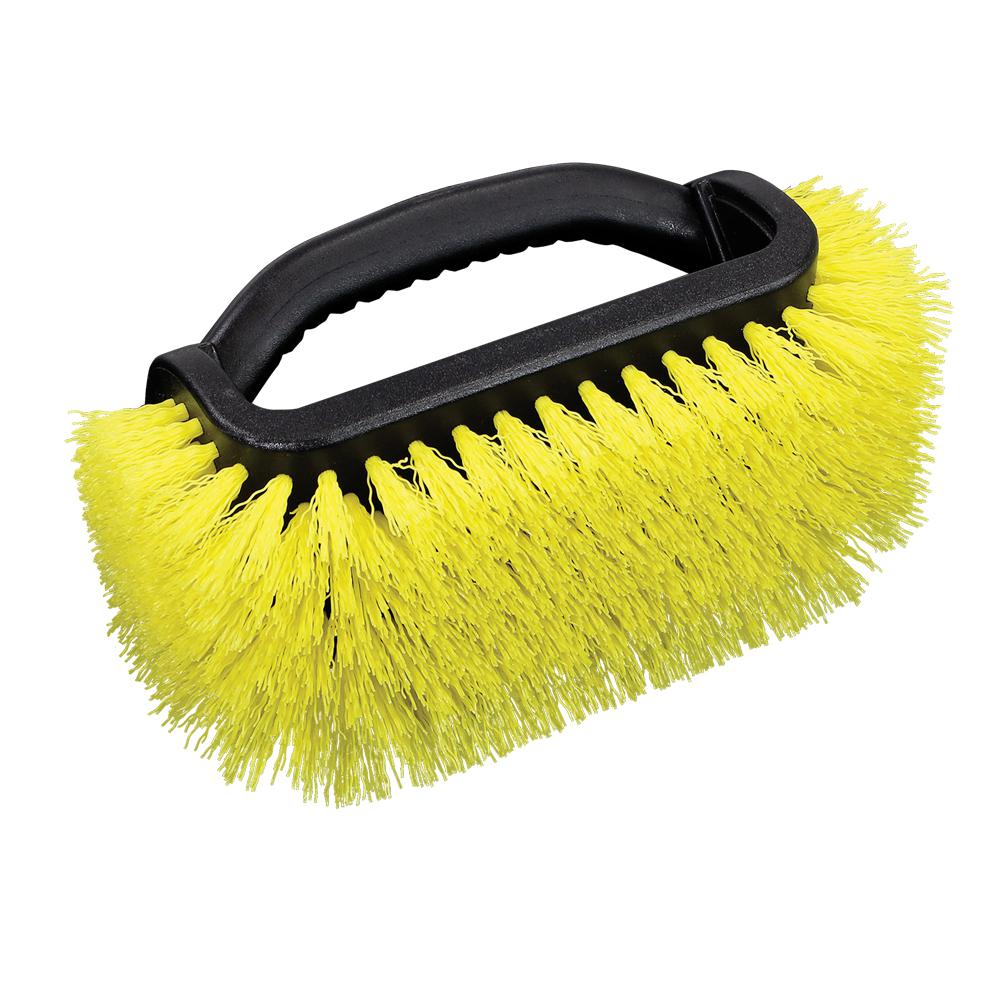That trusty outdoor scrub brush – your secret weapon against grimy decks, stubborn patio stains, and grimy siding – has suddenly let you down. The handle is wobbly, making cleaning a frustrating, and potentially dangerous, chore. Don’t despair! A wobbly handle is often a simple fix, and getting it back in tip-top shape is easier than you think. This comprehensive guide will walk you through diagnosing the problem and providing various solutions to restore your brush to its former glory.
Identifying the Wobble: A Troubleshooting Detective Story

Before diving into repairs, let’s pinpoint the source of the wobble. Is the handle loose at the head where it connects to the brush bristles? Or is there a problem further down the handle itself – perhaps a crack or break? Carefully examine the entire handle. Look for:
- Loose screws or fasteners: This is the most common culprit. Check if any screws are loose or missing.
- Broken or cracked handle: A damaged handle might be beyond simple repair. Inspect for cracks, splinters, or other signs of structural damage.
- Worn-out ferrule: The metal ferrule (the ring connecting the handle to the brush head) can sometimes become loose or damaged.
- Loose internal components: Some brushes have internal mechanisms (like telescoping handles) that could be loose or broken.
Simple Fixes for a Wobbly Brush Handle

Once you’ve identified the problem, you can select the appropriate solution. Here are some common and effective fixes:
Tightening Loose Screws
If loose screws are to blame, grab your screwdriver (the right size is crucial!) and tighten them securely. Don’t overtighten, as this can damage the wood or plastic. If the screw holes are stripped, you might need to use wood glue or a stronger adhesive to secure the screw in place before tightening.
Repairing a Cracked Handle
A cracked handle is trickier. Depending on the severity and location of the crack, you can try several approaches:
- Wood glue and clamps: For small cracks, apply a strong wood glue to the crack, clamp the pieces firmly together, and let it dry completely according to the glue’s instructions. This method works best for wooden handles.
- Epoxy resin: For larger cracks or more significant damage, epoxy resin offers a stronger repair. Follow the manufacturer’s instructions carefully.
- Handle replacement: If the crack is extensive or compromises the structural integrity of the handle, replacing the entire handle might be the best option. You can often find replacement handles online or at hardware stores.
Addressing a Loose Ferrule
A loose ferrule often requires more effort. You might try to tighten it with pliers or a wrench, but be careful not to damage the ferrule or the handle. If tightening doesn’t work, you may need to replace the ferrule entirely. This typically involves carefully removing the old ferrule, cleaning the area, and then attaching the new ferrule with appropriate adhesive.
Fixing Internal Mechanisms
If your brush has a telescoping or other internal mechanism, a loose connection is more challenging. Consult the manufacturer’s instructions or search for online repair guides specific to your brush model. Often, tightening screws or re-assembling the internal components can resolve the issue.
Prevention is Better Than Cure: Maintaining Your Scrub Brush

Regular maintenance can significantly extend the life of your outdoor scrub brush and prevent future wobbles. Here are a few tips:
- Proper storage: Store your brush in a dry, protected area to prevent wood rot and damage from the elements.
- Regular inspection: Periodically check the handle for loose screws, cracks, or other damage. Addressing minor issues early can prevent them from becoming major problems.
- Gentle use: Avoid excessive force or twisting when using the brush, as this can put stress on the handle and its connections.
When to Call in the Professionals (or Replace It!)

Sometimes, the damage is too extensive for DIY repairs. If you’ve tried the above methods and the wobble persists, or if you’re uncomfortable attempting repairs yourself, it’s time to consider professional help. Alternatively, replacing the brush entirely might be a more cost-effective solution than extensive repairs. Assess the severity of the damage and the overall cost of repair versus replacement before making your decision.
A wobbly brush handle is a common problem with a simple solution in most cases. By carefully examining the problem, and using the appropriate repair technique, you can quickly restore your trusty scrubbing companion to its full cleaning potential, saving you both time and money.


